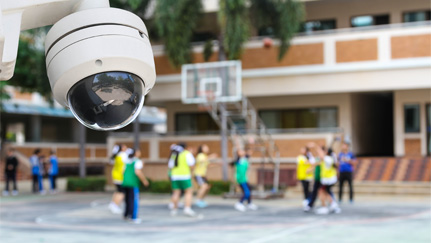Abuse prevention: The power of reviewing camera footage

In youth-serving organizations, the safety and well-being of young individuals are of utmost importance. Video cameras are a highly effective tool that can significantly strengthen safety measures. Organizations install and use cameras for various reasons, including enhancing security, supporting investigations, monitoring operations, reducing liability, and deterring misconduct. While cameras serve multiple functions, their role in abuse prevention is particularly important. Reviewing camera footage is essential for safeguarding youth within your facility.
Recent incidents have highlighted the tragic consequences of neglecting camera reviews. In some cases, caregivers were able to abuse children under the camera's watch, with the abuse only discovered after reviewing the footage much later. These incidents underscore the critical need for regular and proactive camera reviews to support abuse prevention and protect vulnerable individuals.
By consistently monitoring and analyzing camera footage, organizations can achieve several key objectives:
Enhancing accountability and transparency
Video cameras provide a clear and unbiased record of events. By regularly reviewing footage, organizations can ensure that staff members are adhering to policies and procedures designed to protect youth. This transparency helps in holding individuals accountable and deterring potential misconduct.
Identifying red flag behaviors
Regularly checking camera footage helps organizations spot red flag behaviors early, such as inappropriate interactions, policy violations, lapses in active supervision or staff who are out of ratio. Early detection allows for immediate intervention, preventing potential issues from escalating. However, it's crucial to remember that cameras can only review interactions after the fact and cannot intervene in real-time. Many red flags, especially those related to grooming or inappropriate behavior, are verbal interactions that cameras cannot capture. Therefore, active supervision and thorough training are essential to recognize and report behaviors that cameras might miss.
Training and continuous improvement
Reviewing footage is a valuable training tool. By analyzing interactions and incidents, organizations can identify areas for additional training or support, fostering continuous improvement and a safer environment. Regularly monitor programs, facilities, and staff through camera footage to celebrate successes and address concerns. Highlight positive examples in staff meetings to encourage best practices, and discuss areas for improvement in one-on-one check-ins. This approach helps maintain a safe and supportive environment for youth.
Best practices to guide your efforts
- Regularly scheduled reviews: Establish a routine for reviewing footage to promptly identify any concerning behavior. Include spot checks for performance management and increase reviews for new employees during probationary periods or role transitions to ensure compliance with policies and procedures and adhering to the Code of Conduct (COC).
- Daily live footage checks: Conduct random spot checks throughout the day to verify compliance with policies and procedures, helping to catch issues that might not be evident during scheduled reviews.
- High-risk times and areas: Focus reviews on high-risk times (e.g., nap times, transitions) and areas (e.g., outside of locker rooms, secluded areas, hallways) where abuse is more likely to occur.
- Access control and staff training: Evaluate access controls to ensure that only designated leadership personnel have access to camera systems and footage. Implement strong password protocols and keep user activity logs. Ensure staff members are trained in how to review and interpret footage effectively.
- Documentation: Maintain detailed records of all reviews, noting the date, time, and any concerning behaviors or positive examples. Use footage to document incidents accurately, providing a reliable record for future reference. Additionally, document the steps taken to resolve any issues found. This demonstrates due diligence and a proactive approach to abuse prevention.
- Transparency: Inform parents and staff about the use of cameras and the review process. Transparency builds trust and ensures everyone understands the purpose of surveillance.
- Legal compliance: Ensure that camera use follows local and federal regulations, including privacy laws. Obtain necessary permissions from parents and staff.
- Strategic placement and equipment functionality: Ensure cameras are strategically placed in high-risk areas and verify that they are powered, recording properly, and providing clear visibility.
The regular and proactive review of camera footage is a powerful tool in preventing abuse and ensuring the safety of children in youth-serving organizations. By implementing comprehensive best practices, organizations can enhance accountability, identify red flag behaviors early, and foster continuous improvement. These measures not only protect vulnerable individuals but also build trust and transparency within the community.
Remember, while cameras are a valuable tool, they should complement, not replace, the vigilant supervision provided by dedicated and trained staff. The commitment to safeguarding youth through diligent camera reviews demonstrates a proactive approach to creating a safe and supportive environment for all.
